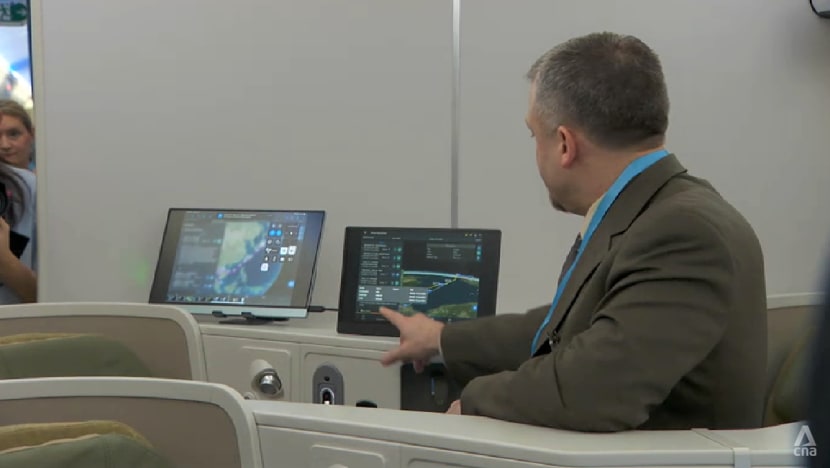New air traffic management system to share flight path data aims to save time, fuel in flying
It collects and shares information like weather and airport traffic in real time and ahead of time.

The system is a collaboration between the air navigation service providers of Singapore, Japan, Thailand and the United States.
SINGAPORE: The world’s first flight to collect and share data with countries along its route touched down at Changi Airport on Wednesday (Jun 15).
It is part of a multinational project to transform air traffic management, making international air traffic more efficient and sustainable.
The air traffic control system utilises a system known as multi-regional trajectory-based operations (MR-TBO) to collect and share information such as weather and airport traffic in real time, and even ahead of time.
MORE AWARENESS OVER FLIGHT CONDITIONS
The system is a collaboration between the air navigation service providers of Singapore, Japan, Thailand and the United States.
It gathers data from the respective air spaces and shares it among all countries on the flight path.
Pilots told CNA it gives them more awareness over flight conditions and how their requests affect the wider air traffic system.
“Before (MR-TBO), when I made a request to air traffic control, I didn't really know if it's going to be accepted right away. And a request that I might make to optimise my flight might actually be disruptive to the rest of the system,” said Dr Kirk Vining, chief pilot for product development at Boeing Commercial Airplanes.
“But with MR-TBO, I can watch as that request is being processed, or the air traffic controller can make a trial request, and collaboratively together, we can see how that change might affect the system.
“So as a pilot, I have more awareness on how the change will impact not only my flight but also other flights, and I can have more assurance that this request can likely be granted.”
SAVING OPERATING COSTS
The Civil Aviation Authority of Singapore (CAAS) said it helps to make the flight more sustainable and efficient.
“If a flight could take a more direct or quicker route, and avoid delays and detours, not only do passengers benefit by being able to get to their destination earlier,” said CAAS director-general Han Kok Juan.
“Airlines save on operating costs. We will also be able to cut on fuel burnt, and save the environment.”
CAAS said that this collaboration will become more important as more countries invest in airport infrastructure to meet the rising travel demands.
It is also in line with the International Civil Aviation Organization's goal of achieving net-zero carbon emissions by 2050.
The demo runs so far cover four flights across the four partner countries.
The multinational project, which has been three years in the making between Singapore and its partners, started as a lab simulation before culminating in the proof-of-concept flights.
The next step is to make it happen across multiple flights.
CAAS said the aim is to get more countries on board, so that there can be international rules and standards for sharing data and managing cross-border air traffic.












.jpeg?itok=w0JKXXjz)







